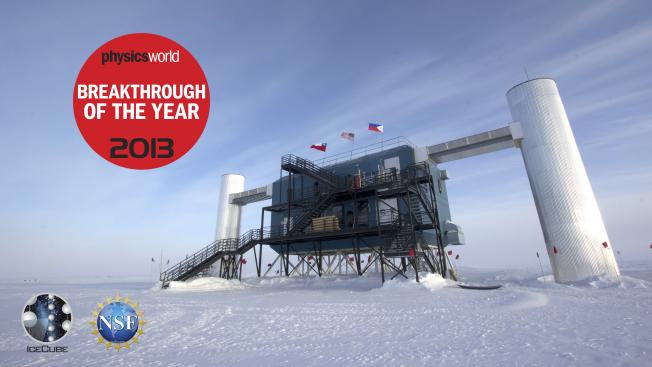Calibration and Characterization of the IceCube Photomultiplier Tube
ArXiv 1002.2442 (2010)
Abstract:
Over 5,000 PMTs are being deployed at the South Pole to compose the IceCube neutrino observatory. Many are placed deep in the ice to detect Cherenkov light emitted by the products of high-energy neutrino interactions, and others are frozen into tanks on the surface to detect particles from atmospheric cosmic ray showers. IceCube is using the 10-inch diameter R7081-02 made by Hamamatsu Photonics. This paper describes the laboratory characterization and calibration of these PMTs before deployment. PMTs were illuminated with pulses ranging from single photons to saturation level. Parameterizations are given for the single photoelectron charge spectrum and the saturation behavior. Time resolution, late pulses and afterpulses are characterized. Because the PMTs are relatively large, the cathode sensitivity uniformity was measured. The absolute photon detection efficiency was calibrated using Rayleigh-scattered photons from a nitrogen laser. Measured characteristics are discussed in the context of their relevance to IceCube event reconstruction and simulation efforts.Measurement of the energy spectrum of cosmic rays above 10^18 eV using the Pierre Auger Observatory
ArXiv 1002.1975 (2010)
Abstract:
We report a measurement of the flux of cosmic rays with unprecedented precision and statistics using the Pierre Auger Observatory. Based on fluorescence observations in coincidence with at least one surface detector we derive a spectrum for energies above 10^18 eV. We also update the previously published energy spectrum obtained with the surface detector array. The two spectra are combined addressing the systematic uncertainties and, in particular, the influence of the energy resolution on the spectral shape. The spectrum can be described by a broken power law E^-gamma with index gamma=3.3 below the ankle which is measured at log10(E/eV) = 18.6. Above the ankle the spectrum is described by a power law with index 2.6 followed by a flux suppression, above about log10(E/eV) = 19.5, detected with high statistical significance.A Study of the Effect of Molecular and Aerosol Conditions in the Atmosphere on Air Fluorescence Measurements at the Pierre Auger Observatory
ArXiv 1002.0366 (2010)
Abstract:
The air fluorescence detector of the Pierre Auger Observatory is designed to perform calorimetric measurements of extensive air showers created by cosmic rays of above 10^18 eV. To correct these measurements for the effects introduced by atmospheric fluctuations, the Observatory contains a group of monitoring instruments to record atmospheric conditions across the detector site, an area exceeding 3,000 km^2. The atmospheric data are used extensively in the reconstruction of air showers, and are particularly important for the correct determination of shower energies and the depths of shower maxima. This paper contains a summary of the molecular and aerosol conditions measured at the Pierre Auger Observatory since the start of regular operations in 2004, and includes a discussion of the impact of these measurements on air shower reconstructions. Between 10^18 and 10^20 eV, the systematic uncertainties due to all atmospheric effects increase from 4% to 8% in measurements of shower energy, and 4 g/cm^2 to 8 g/cm^2 in measurements of the shower maximum.Erratum to "Atmospheric effects on extensive air showers observed with the surface detector of the Pierre Auger observatory" [Astroparticle Physics 32(2) (2009), 89-99] (DOI:10.1016/j.astropartphys.2009.06.004)
Astroparticle Physics 33:1 (2010) 65-67
Erratum: Search for high-energy Muon neutrinos from the "naked-eye" GRB080319b with the icecube neutrino telescope (The Astrophysical Journal (2009) 701 (1721))
Astrophysical Journal 708:1 (2010) 911-912



